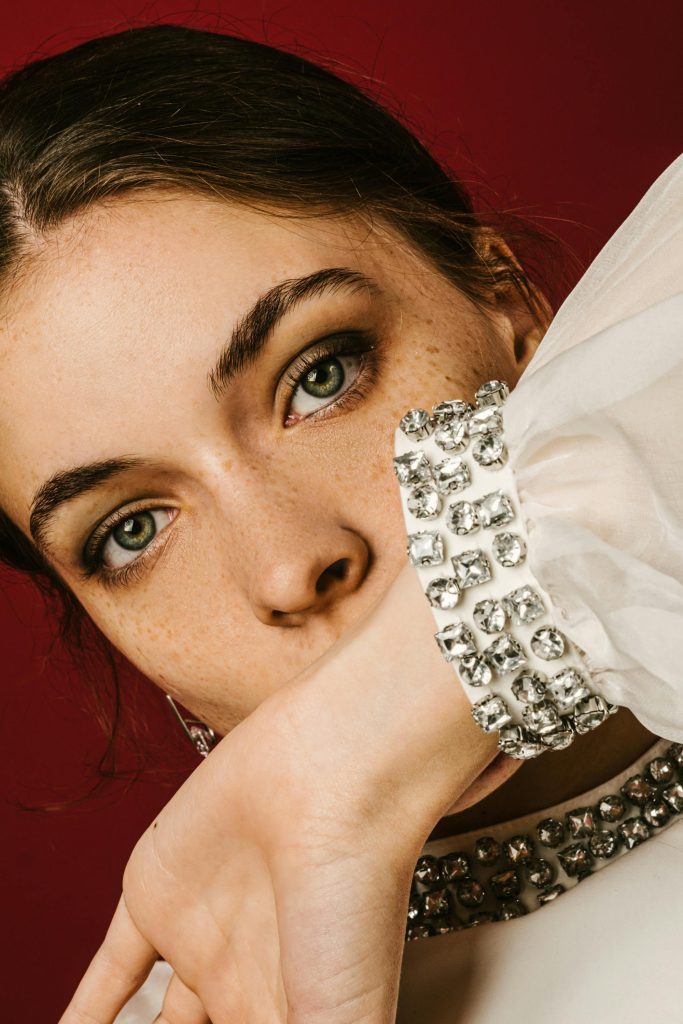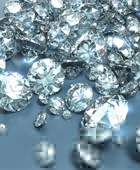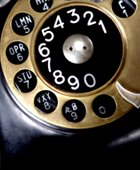Diamonds have long been associated with wealth, luxury, and status, but their significance extends far beyond material value. Over the centuries, diamonds have found their way into the very fabric of popular culture and fashion, becoming symbols of beauty, power, and intrigue. Whether worn by royalty, movie stars, or musicians, diamonds have played a central role in shaping trends, telling stories, and symbolizing cultural milestones. This article explores how diamonds have influenced fashion and culture, highlighting key moments in history where they have taken center stage.

Diamonds in History: A Symbol of Power and Prestige
The history of diamonds in fashion and culture dates back thousands of years. From ancient civilizations to modern royalty, diamonds have often been a reflection of social standing and political influence. The cultural significance of diamonds was first seen in ancient India, where they were believed to bring protection, courage, and invincibility to their wearers. These early diamonds were prized for their mystical properties, and their rarity made them a symbol of wealth and power.
1. The Crown Jewels and Royalty:
One of the most enduring symbols of diamonds in history is their use in royal crowns, regalia, and personal adornments. European monarchs, in particular, were known to use diamonds as a display of their dominance and divine right to rule. For example, the British Crown Jewels contain some of the most famous diamonds in the world, including the Koh-i-Noor and the Cullinan Diamond, which are both considered priceless symbols of the British Empire’s power and reach.
- Koh-i-Noor Diamond: This diamond, which originated in India, is one of the largest cut diamonds in the world and has been passed between various rulers throughout history. It now resides in the British Crown Jewels, symbolizing the complex history of conquest and colonization.
- Cullinan Diamond: Discovered in South Africa, the Cullinan is the largest gem-quality rough diamond ever found. It was gifted to King Edward VII and was eventually cut into nine large stones, with two of the largest pieces incorporated into the Crown Jewels.
The use of diamonds by royalty set a precedent for their association with the highest levels of society. Diamonds became a must-have for aristocrats and wealthy families, and their use in formal wear signified both elegance and privilege.
2. The 20th Century and Hollywood Glamour:
By the early 20th century, diamonds had transitioned from royal exclusivity to the world of Hollywood and fashion. With the rise of cinema and celebrity culture, diamonds became a staple of glamour and luxury in the public eye. Hollywood films often featured characters adorned in lavish diamond jewelry, further solidifying the connection between diamonds and high fashion.
- Marilyn Monroe and “Diamonds Are a Girl’s Best Friend”: In 1953, the movie “Gentlemen Prefer Blondes” introduced what would become one of the most iconic musical numbers in film history—Marilyn Monroe performing “Diamonds Are a Girl’s Best Friend.” Dressed in a stunning pink gown and dripping in diamonds, Monroe cemented diamonds as a symbol of femininity, desirability, and material success. The song’s message, that diamonds are a woman’s ultimate companion, became ingrained in popular culture and helped shape the view of diamonds as aspirational symbols of wealth and independence for women.
- Elizabeth Taylor and Her Famous Diamonds: Another Hollywood legend closely associated with diamonds was Elizabeth Taylor, known for her love of extravagant jewelry. Over her lifetime, she collected some of the world’s most famous diamonds, including the Taylor-Burton Diamond, a 68-carat pear-shaped diamond given to her by Richard Burton. Taylor’s love for diamonds, as well as her public persona as a glamorous and successful actress, reinforced the image of diamonds as symbols of beauty, luxury, and opulence.
Diamonds in Fashion: A Timeless Trend
In addition to their role in film and celebrity culture, diamonds have been a constant feature in the world of fashion. From haute couture designers to high-end jewelry houses, diamonds have always been at the forefront of trends and artistic expression. They have been used to create some of the most extraordinary and iconic pieces of jewelry ever worn.
1. Cartier and the Art of High Jewelry:
One of the most influential jewelry houses in the world, Cartier has been synonymous with diamonds and high fashion for over a century. Known for its innovative designs and exceptional craftsmanship, Cartier has created countless diamond masterpieces worn by royalty, celebrities, and fashion icons alike.
- The Panther Bracelet: In the early 20th century, Cartier’s Panther Bracelet, commissioned by the Duchess of Windsor, became a symbol of daring fashion. The bracelet, adorned with diamonds and onyx, was an innovative design at the time, representing both the extravagance and elegance of diamonds in wearable art.
- The Love Bracelet: While not entirely diamond-centric, Cartier’s Love Bracelet became an enduring symbol of modern romance and commitment. It became popular as a gift between couples, often paired with small diamonds to signify eternal love. This trend marked a shift in diamond jewelry as a deeply personal and symbolic accessory, moving beyond status to a more intimate expression of emotion.
2. The Influence of De Beers and “A Diamond is Forever”:
Arguably one of the most important moments in the modern history of diamonds came from a marketing campaign. In 1947, De Beers, the diamond mining and trading giant, coined the now-famous slogan “A Diamond is Forever.” This tagline not only revolutionized the diamond industry but also embedded diamonds as the ultimate symbol of eternal love, particularly in the context of engagement rings.
The idea that a diamond ring was essential for proposing marriage became deeply ingrained in Western culture, thanks largely to this campaign. The slogan’s influence extended far beyond advertising, shaping societal norms and traditions around love and commitment. Today, the vast majority of engagement rings feature diamonds, with couples believing in the lasting power and significance of the stone. This moment in diamond history demonstrates how marketing can influence culture and establish new traditions.
3. Red Carpet Moments: Diamonds and the Fashion Industry:
No discussion about diamonds and fashion would be complete without acknowledging the red carpet. Awards shows like the Oscars, the Cannes Film Festival, and the Met Gala have become platforms for designers and jewelry houses to showcase the most exquisite diamond creations. Actresses and celebrities draped in diamonds regularly make headlines, cementing the stone’s place as the ultimate symbol of glamour.
- Lady Gaga’s 2019 Oscars Necklace: One of the most memorable red carpet moments in recent years was Lady Gaga’s appearance at the 2019 Academy Awards. She wore the Tiffany Diamond, a 128-carat yellow diamond that had previously only been worn by two other women, including Audrey Hepburn. This moment not only paid homage to Old Hollywood glamour but also showcased the continuing influence of diamonds in modern culture.
The Evolution of Diamonds in Modern Pop Culture, Music, and Digital Media
As we moved into the late 20th and 21st centuries, the role of diamonds in popular culture expanded beyond the traditional confines of royalty, Hollywood, and high fashion. Diamonds have increasingly become symbols of success, opulence, and status in various forms of media, including music videos, digital platforms, and even video games. This evolution highlights how diamonds continue to adapt and maintain their cultural relevance, captivating new generations in ever-changing contexts.
Diamonds in Music: A Symbol of Success and Extravagance
In the world of music, particularly in genres such as hip-hop, pop, and R&B, diamonds have come to symbolize success, wealth, and extravagance. Artists frequently reference diamonds in their lyrics, use them as metaphors for their achievements, and flaunt them in music videos as a testament to their rise in status.
1. Hip-Hop Culture and the “Bling” Phenomenon:
The term “bling” became synonymous with the ostentatious display of wealth, particularly in the form of diamond jewelry. Beginning in the late 1990s and early 2000s, hip-hop artists began popularizing the wearing of large, flashy diamond-encrusted chains, watches, and grills. The phenomenon was not just about showcasing wealth but also about asserting identity and success in a world where diamonds were a status symbol.
- Jay-Z and “Diamonds from Sierra Leone”: In his collaboration with Kanye West on the song “Diamonds from Sierra Leone,” Jay-Z highlights both the allure and the darker side of the diamond industry, bringing awareness to the issue of conflict diamonds. The song is an example of how hip-hop artists have used diamond imagery not only to showcase wealth but also to provoke thought about the origins and implications of such symbols.
- Beyoncé’s “Upgrade U”: Beyoncé’s song “Upgrade U” references the tradition of using diamonds to symbolize success and power, playing with the idea of upgrading one’s lifestyle with luxury items, including diamonds. In the music video, she is adorned with diamond jewelry, reinforcing the visual connection between her music, her status, and diamonds.
2. Pop Icons and Diamond Imagery:
Beyond hip-hop, pop music has also embraced the symbolism of diamonds. Pop stars often use diamonds to represent empowerment, beauty, and strength.
- Rihanna’s “Diamonds”: One of the most iconic songs in recent pop music is Rihanna’s “Diamonds,” which metaphorically describes her shining bright “like a diamond.” The song and its visuals use diamonds as symbols of resilience, uniqueness, and enduring beauty, echoing the timeless qualities of the gemstones themselves.
- Madonna’s Diamond-Encrusted Outfits: Over the years, Madonna has worn numerous diamond-encrusted costumes during her performances, further associating diamonds with the image of pop royalty. Her embrace of diamond embellishments emphasizes their association with power, glamour, and artistic expression.
Diamonds in Digital Media and Technology
As digital media became a dominant form of expression and interaction, diamonds also found their way into online platforms, digital art, and even virtual worlds. The portrayal of diamonds in these contexts reflects their enduring allure and adaptability.
1. Social Media Influence and Diamond Trends:
Platforms like Instagram, TikTok, and Pinterest have become instrumental in setting fashion trends, including those involving diamond jewelry. Influencers, celebrities, and fashion bloggers regularly showcase their diamond collections, creating new trends and influencing purchasing decisions.
- Diamond Challenges and Hashtags: Hashtags such as #DiamondLife and #DiamondsAreForever have become popular on social media, where users share photos of their diamond purchases, engagement rings, and diamond-studded accessories. The visual nature of these platforms allows diamonds to shine, literally and figuratively, reaching global audiences and influencing fashion choices.
- Digital Diamond Filters and Augmented Reality: Some brands have leveraged augmented reality (AR) technology to allow users to try on virtual diamond jewelry via smartphone apps. This innovative approach has made diamonds more accessible to a wider audience, bridging the gap between digital experiences and physical luxury.
2. Diamonds in Video Games and Virtual Worlds:
Video games and virtual worlds have also embraced the allure of diamonds, incorporating them into gameplay as symbols of wealth, achievement, and rarity.
- Minecraft and Diamond Tools: In the popular game Minecraft, diamonds are among the most valuable resources players can find and use. They are necessary for crafting some of the strongest tools and armor, making them a highly sought-after commodity in the game. This virtual representation reinforces the real-world value and desirability of diamonds, highlighting their perceived worth even in digital realms.
- Fortnite and Virtual Bling: In games like Fortnite, players can acquire virtual diamond accessories to customize their characters, enhancing their status in the game. The use of diamonds in such settings demonstrates how their symbolic value transcends physical ownership, reflecting status and achievement in virtual environments.
Diamonds in Modern Storytelling and Cinema
Diamonds continue to play a crucial role in modern storytelling, often serving as plot devices or symbols within films and television shows. Their representation in these media not only enhances the narrative but also reinforces their cultural significance.
1. Heist Films and the Mystique of Diamonds:
Diamonds are often central to the plot of heist movies, symbolizing the ultimate prize for daring criminals or intrepid detectives.
- “Ocean’s 8” and the Cartier Necklace: In the film “Ocean’s 8,” the plot revolves around a group of women attempting to steal a $150 million diamond necklace during the Met Gala. The film not only showcases the allure of diamonds but also emphasizes their status as ultimate treasures, worthy of elaborate schemes.
- “The Pink Panther”: This classic film series revolves around the theft of a priceless diamond known as “The Pink Panther.” The diamond itself becomes a character in the story, representing not only wealth but also intrigue and adventure.
2. Diamonds as Symbols of Romance and Conflict:
Diamonds often symbolize love and commitment in romantic films, as well as the darker sides of human nature in dramas and thrillers.
- “Titanic” and the Heart of the Ocean: The fictitious Heart of the Ocean diamond in “Titanic” serves as a powerful symbol of love, loss, and memory. Its role in the film captures the timeless allure of diamonds as treasures tied to human emotion and history.
- “Blood Diamond”: This film brings to light the harsh realities of the diamond trade in conflict zones, focusing on the journey of a rare pink diamond. It offers a critique of the diamond industry, emphasizing the need for ethical sourcing and awareness of the human cost behind these precious stones.
Conclusion: Diamonds as Eternal Icons
From ancient symbols of power and protection to modern icons of fashion, wealth, and digital influence, diamonds have remained central to human culture for millennia. Their presence in popular culture and fashion continues to evolve, adapting to new mediums and changing societal values. Whether worn by royalty, flaunted by pop stars, or featured in blockbuster films, diamonds retain their status as symbols of beauty, strength, and eternal love.
As we look to the future, diamonds will likely continue to captivate and inspire, reflecting our deepest desires for timelessness, value, and the extraordinary. The story of diamonds is one of continuity and change, echoing the complexities and aspirations of the societies that treasure them.




